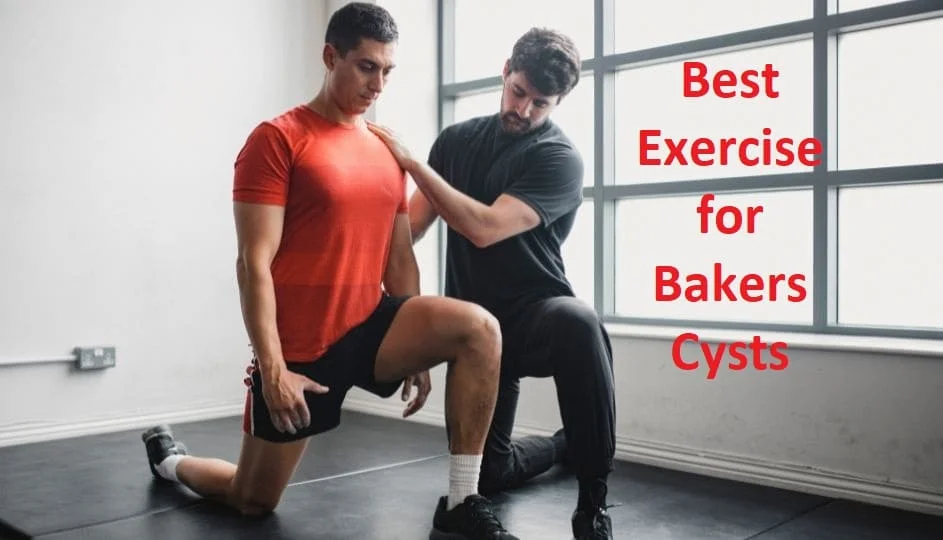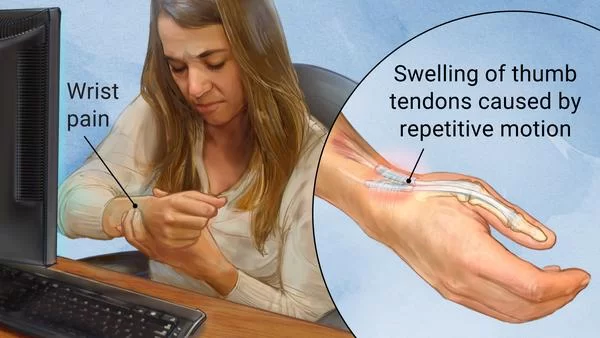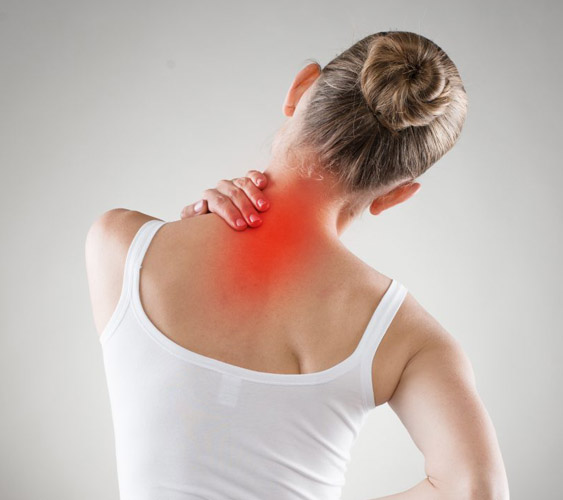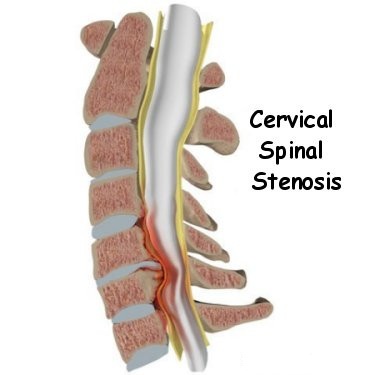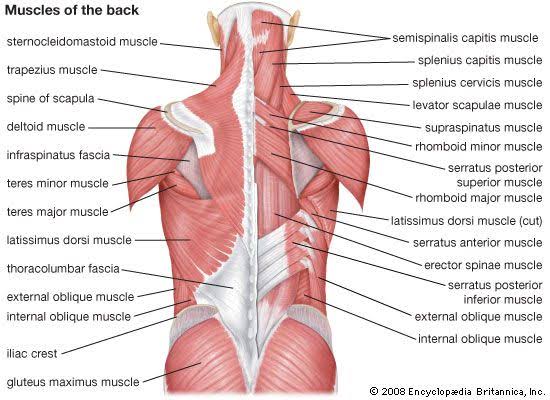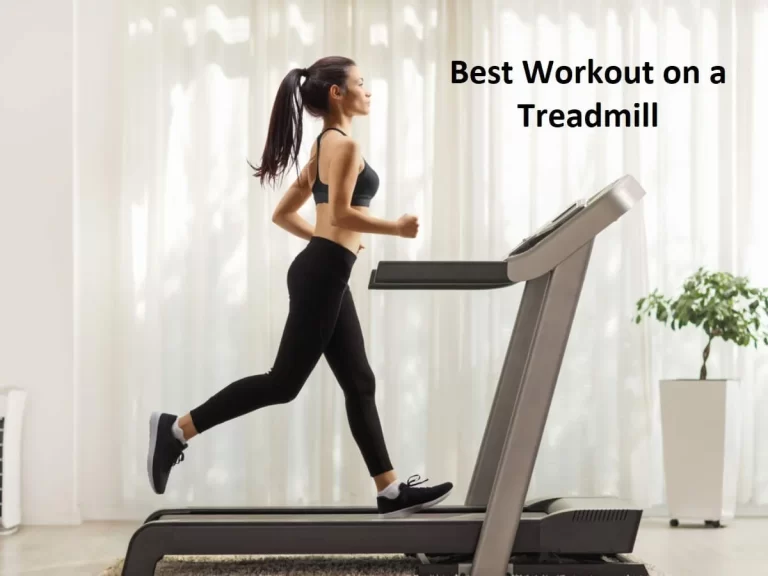16 Best Exercise for Bakers Cysts
Table of Contents
Introduction
Exercise can play a supportive role in managing the symptoms of Baker’s cysts and promoting knee health. However, it’s crucial to approach exercise with caution and under the guidance of a medical professional. The right exercises can help improve flexibility, strengthen the muscles around the knee joint, and potentially reduce discomfort associated with Baker’s cysts.
While Baker’s cysts themselves may not be directly treated through exercise, focusing on exercises that target the muscles of the thighs, hips, and lower legs can provide added stability and support to the knee joint. Strengthening these muscles can contribute to better joint alignment, potentially reducing strain on the affected area.
Stretching exercises that gently improve flexibility and mobility of the knee joint and surrounding muscles may also be beneficial. These stretches can help maintain or improve the knee’s range of motion and reduce the risk of stiffness.
A Baker cyst is a fluid-filled growth posterior aspect of the knee. This developed the feeling of swelling and tension. A Baker cyst, also called a popliteal (pop-luh-TEE-ul) cyst, sometimes reasons for calf pain. The pain may worsen when moving or straightening the knee, or when the knee is fully flexed basically this condition restricted knee movement flexion.
In some cases, Baker cyst is usually seen as the reason of some knee conditions, such as arthritis or a cartilage tear. Both conditions can cause the knee to develop excess fluid. Although a Baker’s cyst can cause swelling and discomfort, treating the problem that’s causing it usually helps. Patellar cysts can cause pressure on other anatomical structures. Compression of the popliteal artery or vein can cause ischemia or thrombosis, respectively, while compression of the tibia or peroneal nerve can cause peripheral neuropathy.
Baker’s cysts condition occurs in the posteromedial aspect of the knee between the medial belly of the gastrocnemius muscle and the semimembranosus tendon. In adult cases, these conditions are related to intra-articular lesions, which may reasons of meniscal lesions or arthrosis.
Exercises that focus on maintaining knee mobility can relieve pain and prevent muscle weakness. Consult your doctor or physical therapist before treating a Baker cyst. Improper exercise can damage the knee and increase pain. Regular, gentle exercises can increase the range of motion and strengthen the muscles around the knees. in this condition mostly seen in the tight muscles, you can do stretching exercises for muscle flexibility. By exercising for several duration(a week), you can decrease some of the symptoms that can occur due to baker’s cyst condition.
It is very best to diagnose a ruptured Baker’s cyst in acute early duration to determine the best treatment and avoid complications related to this condition, such as compartment syndrome, and to differentiate from:
Thrombophlebitis
Popliteal aneurysm
Inflammatory arthritis
Medial gastrocnemius strain
Soft-tissue tumor or muscle tear
Types of Bakers cysts
Primary Cyst: A enlargement developed independently from the joint and there is no knee derangement.
Secondary Cyst: A amplification of the bursa situated between the gastrocnemius and semimembranosus tendons: fluid finds its discovery through the channel the normal bursa connects with the joint. This is the most common occurrence.
Symptoms of Bakers cyst
sometimes, during the Baker cyst, you cannot experience the pain. symptoms included:
Swelling behind the knee, and sometimes in the calf(posterior part of leg)
In the posterior part of the leg or at the knee you feel Sharp, stabbing pain.
Stiffness
you feel pain while bending your knee as far as you usually can (causing a limited range of motion).
you feel sometimes locking or clicking in the knee joint
Tightness behind the knee
Sharp pain in the knee
sometimes posterior part of the leg becomes red or a feeling of water runs down the calf
Causes of Bakers cyst
These are the causes of bakers cyst the causes included:
Inflammation of the knee joint, which causes developed various types of arthritis
Any type of knee injury, such as a ligament tear(anterior cruciate ligament, medial cruciate ligament)
Sports-related knee injury
Gout
Osteoarthritis
Rheumatoid arthritis
Hyperextensions.
Sprains.
Dislocations.
Bone fractures.
Compartment(painful extra pressure in your muscles).
Nerve damage
Do Exercises Help or Recover a Bakers Cyst?
Exercises are one of the great treatments for a baker’s cyst condition. Muscle tightness is a major reason for popliteal or baker cysts. muscles including tight hamstrings (the muscles situated posterior aspect of your thigh) aggravate a popliteal cyst as if you give excessive pressure on the popliteal cysts.
During this condition you can be feeling pain during knee movement with inflammation and swelling so exercises provide mobility to the knee joint by mobility exercises such as heel slide, straight leg raise, bridging exercises, etc. you can also use cryotherapy(ice massage, ice cubs, ice bags) ice therapy reduce the swelling. after exercise, you can use cryotherapy on the swelling area.
The great option to tell if muscle tightness is one of the major reasons or contributing to your baker’s cyst knee pain is to see a physical therapist who can fully assess you. for muscles tightness of some specific muscles such as the hamstring and the calf muscles so you can check by the specific test which indicates the muscle tightness. for muscle tightness, you can do regular stretching of the specific muscles.
The Best Exercise for Baker cysts condition
Heel slides
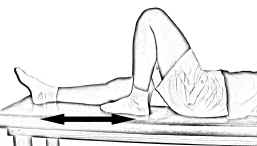
The heel slide is a very easy and simple exercise. the benefit of this exercise is it increases the mobility of the knee joint flexion and extension. this is a mobility exercise.
start the exercise with a supine lying position on the plinth or mat. with your hips straight.
and the flexion of your knee as far as you can, dragging your heel towards your buttocks part, keeping the knee pointing to the ceiling throughout this movement.
drag the heel back down, reversing the movement until your leg is straight again.
You can do 15-20 repetitions per session and perform three sets per day.
Calf stretching with or without a wall
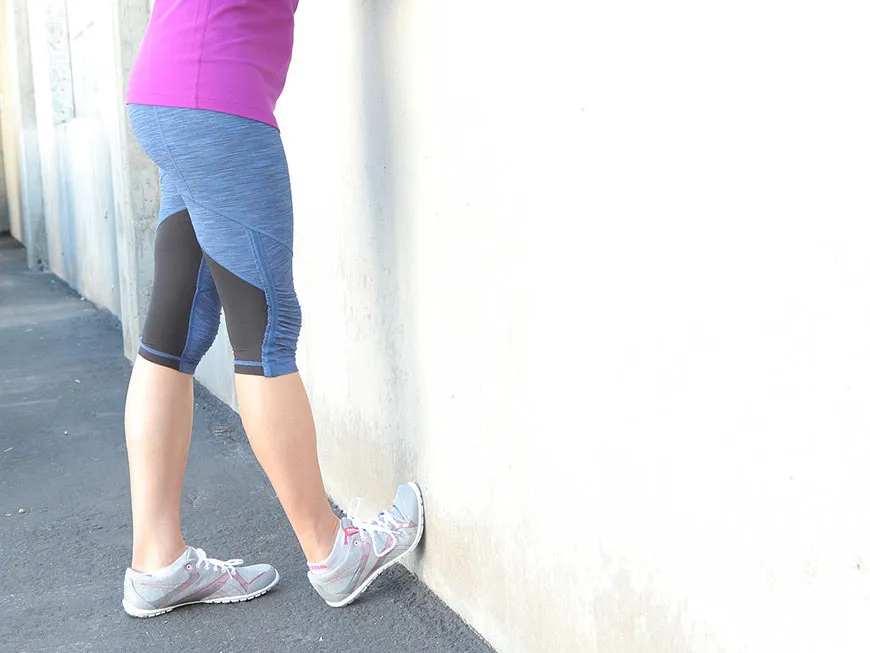
There are two common methods for stretching the calf muscles. One requires a wall, the other does not. Along with the wall
Step 1: start with the Standing position around an arm’s length in front of a wall. keep your one foot in front of your other foot. Extend both arms against the wall. Step 2: give tension to your back (left) heel into the surface and extend your back leg while keeping your front leg extended. Stay in this position for 15-20 seconds. Step 3: Repeat the stretch on another muscle.
Without a wall
Step 1: Place your affected foot in front of your other foot. Step 2: Shift your weight onto your affected foot keeping the weight of your heel on the floor. Stay in this position for 15-20 seconds. Step 3: Repeat the stretch for another muscle. the person should feel a stretch in the calf muscle and heel. If not, slide the back leg forward until you feel a stretch.
Sitting hamstring stretch
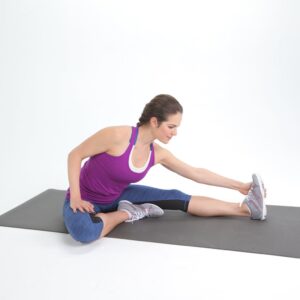
For the hamstring stretch, you can do a long sitting position on the mat or plinth. To stretch the right leg, sit on the plinth with the left leg bent at the knee with the foot facing inward. This is called the butterfly position.
Extension of the right hip, keeping it slightly extended at the knee.
Bend forward at the waist, you should keep the back straight throughout the exercise.
Hold the stretch for 10–30 seconds. You can do 15-20 repetitions per session and perform three sets per day.
Straight leg raise
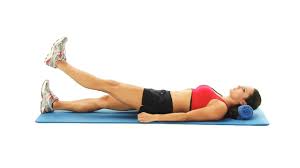
It is often better to do straight legs on a carpet than on a soft bed. Soft surfaces can harm the position of your hips, causing them to twist or sink instead of staying neutral. To start the straight leg:
Supine Lying on your back with your hips straight and your feet comfortably flat on the floor. Bend the knee of the uninjured leg to a 90-degree angle and place the foot on the floor.
Stabilize the rectus leg muscles by contracting the quadriceps (muscle group in the front of the thigh).start with gradually, raising your straight leg at the level of the other knee from the ground. Hold for three seconds. You can do 15-20 repetitions per session and do three sets per day. Exhale slowly, and lower your leg under control to the floor. If done correctly, you will feel the tension in your hips, thighs, and abs during the movement.
Straight Leg Raise – Leg Laterally Rotated
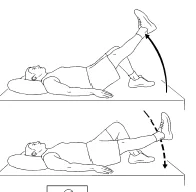
For the straight leg Raise exercise you should take a supine lying position on the mat or plinth you can slight flexion of the hip and knee joint only one leg and then keep the one leg straight.
then you can raise a straight leg at the level of the knee and then laterally rotate the ankle and hold the position for five to ten seconds. after that during the progression duration, you can also add weight to the ankle to increase the strengthening level. you should Hold the stretch for 10–30 seconds. You can do 15-20 repetitions per session and perform three sets per day.
Bridge Exercise
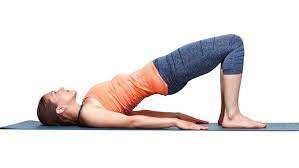
The bridge exercise strengthens the glutes (buttocks) and hamstrings (back thighs) improving core stability. you can add bridge exercise at the progression duration for strength training, which can be used as a warm-up, and is even a good recovery exercise to improve the strength of core muscles and spinal stabilization.
Target muscles glutes, abs, and hamstrings. Find an empty space on the floor and lie on your back using a mat if you have one. Rest your hands on your sides, flexion of your knees, and place your feet on the floor under your knees. Tighten your abs and glutes by pressing your lower back into the ground. Lift your hips to create a bridge position from your knees to your shoulders. contract your core and pull your belly button back near your spine. Hold the bridge position for 20-30 seconds. You can do 15-20 repetitions per exercise and do three sets a day. and then back to the original to the starting position.
Bridge March
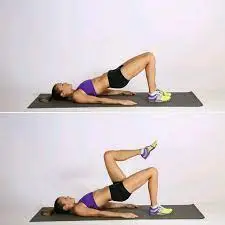
When you are tired of the basic movement and you have mastered the one-leg bridge, try the bridge walk next. Start from the starting position of the main bridge. Lifting your hips up, lift your left leg, bringing your knee closer to your heart. Lower your left leg back down and then lift your right leg, bringing your knee to your stomach. These bridge marches have the benefit of stretching the posterior chain stabilizers, including the hip abductors, gluteus Maximus, and hamstrings. this exercise focuses on stability. You can do 15-20 repetitions per exercise and do three sets per day.
Bridge Exercise with Straight Leg Raise
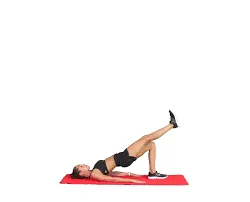
This exercise is the modification exercise of the bridging exercises start with the supine lying position on the mat and the plinth then make a bridge posture by lifting the waist part of your body. your buttocks and hip both are lifted at the same time. then you can raise your hip in a straight position. if you are comfortable so you can do this exercise otherwise you only do the bridging exercise.
Hold the straight leg raise position for three to five seconds, then return the leg to the ground and repeat with the opposite leg. back to your buttocks to the original position and rest when you can no longer keep your pelvis in hold position. You can do 15-20 repetitions per session and perform three sets per day.
Bridge Exercise with resistance band
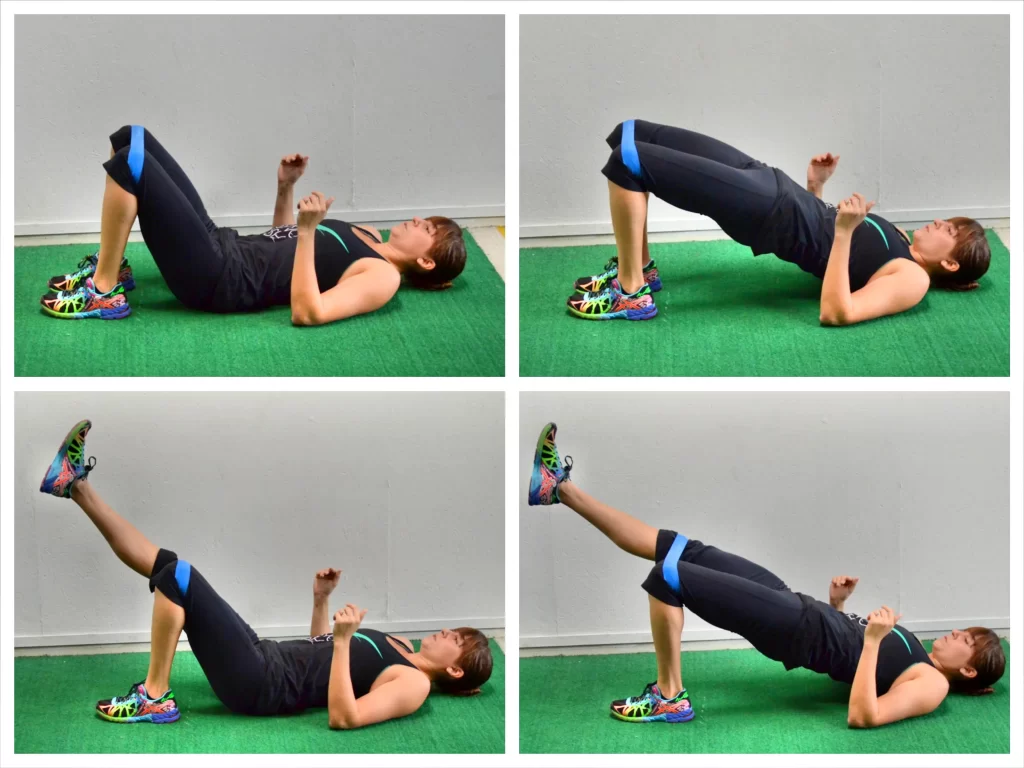
The advantage of these exercises is that you can perform the glute bridge using a resistance band. This is an effective exercise to strengthen the lower limbs and improve core stability. This exercise works the thighs, glutes, lower back, and core muscles. Experiencing lower back and knee pain is common with strength and power training.
This is most commonly seen in competitors who experience a nagging feeling in the lower back and knees from constant pressure.
To do a resistance band glute bridge, lie face down on the floor or mat with your knees bent and a resistance band wrapped around your thighs. Place the band slightly above your knees and place your feet hip-width apart. The arms should be at the sides of the body, fully extended and pointing towards the heels. You can do 15-20 repetitions per exercise and do three sets per day.
Heel lift
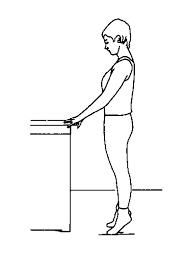
For the heel lift exercise take the Sitting position(you can also take a standing position)for sitting position in a chair with both feet flat on the floor and the knees at a 90-degree angle. This exercise primarily considered the muscles of the calves, namely the gastrocnemius, and soleus.
raise one heel while keeping the ball of the foot on the floor.
Give the pressure from the top of the knee down to flatten the foot. You can do 15-20 repetitions per session and perform three sets per day. the heel lift is a very easy exercise. you can do anywhere or anytime. The exercise focused the strengthens muscles of the calf(soleus and gastrocnemius) and can be useful for athletic persons, physical therapy, general fitness, and more.
Clamshell
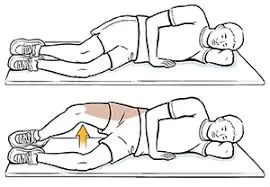
Start the exercise side Lying position on your left side with your legs stacked. do slight flexion of your knees and also flexion of the hip to about a 45-degree angle. Use your left hand to raise your head. Use your right hand to provide the stabilization of your upper extremity by keeping your right hand on your right hip.
Keeping your feet together, lift your right knee as high as possible. Activate your abs by squeezing your belly. Make sure your hips and pelvis are stabilized. hold with your right knee lift position, then return your right leg to the starting position. the clamshell exercise can be focused on the piriformis, the gluteus maximus, medius, and minimus, the psoas major and minor, and the sartorius. you can do 15-20 repetitions per exercise and do three sets per day.
Clamshell for External Hip Rotation
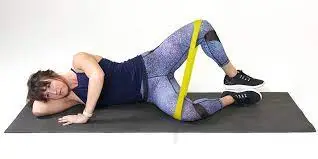
Begin the exercise from the side Lying on your stomach with both legs extended. For this exercise, you required a resistance band. Place one palm at the level of your shoulder and the other palm under your head. Rest your chin or cheek between your hands. Keep your left leg extended.
Bend your right knee slightly below 90 degrees and bring your leg toward your body. Rest the inside of the right ankle on the left calf. Carefully lift your right knee off the floor. You should feel your outer hip muscles being activated. Lower your right knee to the ground. Repeat 20-30 times and then switch legs.
Wall Squat

The benefit of wall squats is building core and lower body strength. Wall squats are effective exercises for increase such muscle strength muscles including the glutes, hamstrings, and quads – especially the inner thighs. In addition to the legs, the wall squat also activates the abdominal muscles, which helps build core strength.
For wall squats, start with 2-3 sets of 30-60 seconds. Choose a time that allows you to maintain good technique throughout the set. with a Standing position, your back should be against a strong wall, and walk your feet forward. Slide down your back to the wall unless your gluteus is parallel to the ground.
Distribute your weight evenly and keep your feet on the floor to create a stable position. Your upper body and head should lean against the wall. Bend your shoulders and hips at the same time as your core.
The ribs should be down and the pelvis slightly flexed. Keep your arms at your sides or place your hands on your legs. All repetitions must be started from this starting position. At the same time, keep the line and tension of the whole body, and hold the wall causal position for the desired time. Stand up, stretch, and repeat as many sets as you want.
Wall Squat with an Exercise Band
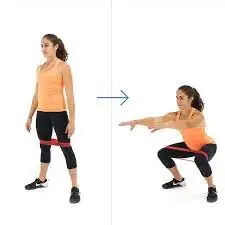
Squats with resistance bands target the glutes, quadriceps, and hip joints. The secondary muscles in this exercise are your back and core, which your body needs for balance and stabilization. Adding a resistance band to a regular squat can add a new challenge to your workout.
Stand with your feet slightly more than hip-width apart, using an eyelet or mini-eyelet strap just above your knees. Your toes should be pointed slightly outward, hands on your hips, or in front of you. Slowly push your hips back into a sitting position and bend your knees. your knees be at a 90-degree angle. Hold the position for around two to five seconds and then slowly return to the starting position. Do 8-12 repetitions.
There are three main types of resistance bands you can use when squatting:
Loop tapes. These continuous loops provide varying levels of resistance. Usually worn above the knees or ankles, they are very versatile, making them useful for a full-body workout. Mini loop straps. These shorter straps are designed to be worn above the knees for a lower-body workout. They are usually made of a smooth fabric that prevents them from becoming folded.
Free bands. You can tie these long, thin leaves into a loop or wrap them around your legs or other objects for resistance. You can use them for upper and lower body training.
Sidestepping
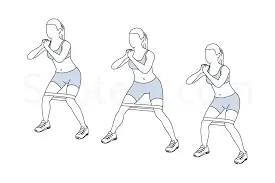
Start the stepping exercise with or without a resistance band around your ankles(you can add the resistance band during the progression period) and knees slightly in the flexion position.
give your weight on your heels as you gradually take a step aside and let the other leg follow without losing tension in the resistance band. You can choose a resistance band according to your strength.
The benefit of This exercise strengthens the glutes, which helps stabilize the hip and knee. these exercises are based on a typical patient with posterior knee pain due to a cyst. Each person is different and the respective doctor should prescribe different exercises or stretches based on the injury and presentation.
Avoid curving the back when performing this stretch.
Walking
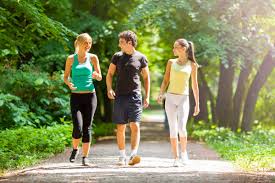
Baker’s cysts sometimes developed as a result of a knee injury. after surgery and during recovery, duration walking may help a person gradually regain the muscle flexibility, strength, and mobility of the muscles.
However, if a person needs to change their locomotion(pattern of walking) or contort a knee into an unusual position to walk comfortably, it may not be safe to walk at that particular time. you should consult a physiotherapist or doctor for walking if they can allow you for walking you can start with step walking and then normal walking. you can do one to three rounds of walking. gradually increase the number of rounds.
knee swelling with a Baker’s Cyst you can do these steps:
Anti-inflammatory drugs
(Warning: ask your pharmacist if this is right for you before starting treatment). The first step in treating Baker’s cyst is to reduce the size of the lump behind the knee. Medications such as Advil, Nurofen, or Voltaren can be very helpful for short-term (1-2 weeks) swelling. They work quickly but have quite a few side effects that get worse with long-term use. After two weeks, drugs such as Mobic or Celebrex (which require a doctor’s prescription in most countries) are more suitable for long-term use. They work more slowly, but have fewer side effects, so they can be used for several months if necessary. Remember that medications can minimize new or increased swelling, but they will not eliminate swelling that has already occurred.
Reduced body weight
It may sound surprising, but losing 5 kg of weight can reduce the load on the knees by up to 40 kg! The difficulty here is that most people exercise a little more to lose weight, but over-exercising only makes Baker’s cysts worse. So the best approach here is to use an effective diet that gives quick but lasting results – no fads or crash diets. We strongly recommend the CSIRO Wellness Diet – it is well-designed based on current research, cost-effective (full refund if successful), and easy to follow.
Better shoes
Wearing more supportive shoes reduces abnormal (usually sprained) forces on the knee that cause irritation and swelling. They do this by reducing the movement of the arch of the foot when you put weight on the foot/feet – dropping the arch also causes the foot to roll inwards. Although arched motion (known as pronation) is essential for normal function, excessive or uncontrolled pronation strains the knee. Running shoes and hiking shoes/boots are often designed to be softer and more supportive.
What exercises and activities should be avoided during a Baker’s cyst treatment plan?
Forcing the knee to fully straighten or extension
Although movement is reduced, it is limited by fluid pressure in the knee (like an overinflated balloon). By forcing, you only push the fluid into Baker’s cyst and aggravate the cartilage, causing more swelling. This usually occurs with muscle strains such as quad strains or strains that are not necessary as part of Baker’s treatment plan.
Excessive torsional(twisted) forces
This makes Baker’s cyst worse because most causes of knee swelling hate torsional forces and respond with increased fluid. For example, walking on rocky or sandy ground or gardening
Alcohol
Yes, unfortunately, the evening routine can make the swelling worse Alcohol increases swelling reactions and produces more fluid in the knee. We often wonder how much alcohol can be drunk before it affects the swelling. There is no magic number, it is a continuation of your first glass. Avoiding consuming alcohol is a great way.
Knee brace orthosis while baker cysts
To understand how knee brace orthosis works, we need to briefly look at how the swelling inside the knee goes away. The fluid in the knee is constantly rotating/changing as it is absorbed through the cartilage of the knee into the bone.
Cartilage also adds a high-quality, nutrient-rich fluid to the knee. So the two ways to treat fluid overload are to reduce the amount of new fluid added to the knee (anti-inflammatories, avoiding irritating movements) and to speed up fluid absorption (braces, exercises). The fluid pressure in the knee can be increased to “push” the fluid into the cartilage. Strong and it should be firm, add constant pressure.
Exercise can also increase blood pressure but to a lesser extent. It is worth noting that excessive pressure, such as squatting to press the knee, will increase the irritation of the cartilage and cause it to liquefy fluid more quickly. It is also at risk of bursting Baker’s cyst, which you can read more about here. Knee braces orthosis provide you with better/faster result in combination with medicines and Baker’s Cyst exercise because it solves the problem of fluid in/out from both ends.
Prevention while a Baker cyst
When preventing knee injuries you automatically prevent the baker cyst condition it is a great way to prevent this condition. During sports or other physical activities.
Wear the knee cap or the right protective equipment during sports. wear well-fitted shoes.
Avoid activity or sports through the pain” if your knee becomes painful during or after physical activity.
Take proper rest time to recover after intense activity.
do some Stretch to the muscles and warm up before playing sports or working out. after stretching relax and then take a stretch after physical activity.
Follow these general precautions to decrease the chances of risk of an injury:
Make sure your home and workplace are free of clutter that could trip you or others.
At home, always use proper tools or equipment to reach objects. Never stand on chairs, tables, or work surfaces.
Use a cane or walker if you have difficulty walking or are at greater risk of falling.
Baker cyst risk factors
Anyone can have a Baker cyst, but there increase chance if you have arthritis or suffer from a knee injury. Some selected age groups are more likely to have chances of a Baker cyst condition, including:
People 35 to 70 years old.
Athletes and also repetitive movement.
People who give lots of pressure on their knees related to work or during a hobby.
People with arthritis. such as osteoarthritis and rheumatoid arthritis
Remedies for bakers cysts
The following home remedies sometimes may help decrease the symptoms of a Baker’s cyst or prevent one from developing the condition:
cryotherapy you can apply ice massages or cold packs to the cyst to alleviate the pain and swelling.
Apply heat therapy to the area. Some people are more comfortable with heat therapy.
Take medicine for pain relief nonsteroidal anti-inflammatory drugs.
Avoid any aggravated activities that increase the pain. If walking is painful, use support from crutches to reduce pressure on the injured knee.
Give a gentle massage to the area around the cyst to reduce the pain and help reduce inflammation.
How to Self-Treat a Baker’s Cyst treatment including:
Take a rest. First, take extra time to rest the sore spot. Pain and swelling likely worsened due to a change in activity level. If the pain is more severe, you can initially use a cane or crutch to take the weight off the knee.
Cryotherapy. Wear ice on the knee and especially behind the knee. As a rule, ice should not exceed 20 minutes per hour. Do not place ice directly on the skin, especially when using the Cold Pack gel pack. People with poor circulation or reduced sensation should be especially careful with ice cream. you can use frozen or ice bags.
Compression therapy. Compression helps prevent and reduce swelling. Swelling can increase pain and slow the healing response. Limit it as much as possible. You can use a generic ACE bandage or buy a pair of soft, over-the-counter compression stockings. you can wear compression stockings. Do not use the knee-high option – you can make the swelling and pain worse. Do not apply the compression too tightly, as this may cause numbness or tingling in the foot, leg, or toes.
If it hurts, don’t do it! Change the activity or stop it completely. If your knees hurt when squatting, don’t go too deep into the exercise at first. This also applies in the exit or rise position. Modify any exercise as needed and do not make technical compromises to complete the exercise. Poor technique will only increase your risk of injury elsewhere or make your knee more sore and irritated.
Warm up before training. I recommend extending the normal warm-up time by at least 10 minutes to increase blood flow to the area. This allows for better mobility and also promotes healing, as movement is necessary to bring in nutrients. At first, use a stationary bike or rowing machine to warm up the muscles and better lubricate the knee joint.
Improve your range of motion (ROM). The goal of the rehabilitation program is to regain completely pain-free ROM. This can be done in several ways. Do heel movements by lying on your back and sliding your heels toward your buttocks. Cycling can also be beneficial. Remember, the most important goal is to recover a full painless ROM. If you are experiencing muscle tension and pain, I recommend using a foam roller for myofascial symptoms. For more information on using a foam roller, see Foam Rolling for Rehabilitation. avoid using the foam roller directly posteriorly aspect of the knee.
Strengthen exercise protocol. The main goal of a strengthening program is to work on strengthening the quadriceps and glute medius (hip abduction). These areas tend to be weak, which can lead to poor knee biomechanics and cause pain and instability. Lifting is a good option, but you may need to limit your range of motion (ROM) at first. Most of my clients start the program with no weight bearing, then progress to partial weight bearing, and finally to full weight bearing. The more severe the symptoms, the longer it takes for a person to transition to more difficult exercises.
A Note from Samarpan Physiotherapy Clinic
A Baker cyst is a fluid-filled lump that develops on the posterior aspect of your knee. It usually occurs after an injury or if something causes swelling inside your knee joint. sometimes Baker’s cysts condition isn’t serious, but you should always have a physiotherapy provider examine and diagnose any new developments or growths in your body.
A Baker cyst can sometimes be managed on its own and it doesn’t always become the reason for pain. However, it’s important to have the condition diagnosed by your physiotherapist to make sure it’s not a sign of a more serious condition. If you have the baker’s cysts condition you can visit our physiotherapy clinic. our clinic provides you with mechanical therapy for pain relief such as transcutaneous nerve stimulation and short-wave diathermy. after that we focus on the mobility of the joint for mobility we teach you all mobility exercises of conditions such as heel slide, calf stretching, and hamstring stretching. the benefit of stretching exercises is they provide flexibility to the muscles. after that, we teach you strengthening exercises such as bridging exercises, wall squats, etc.
Keep in mind that every person has a unique condition, so what works for one person might not be appropriate for another. Consultation with a healthcare professional, such as a physical therapist or orthopedic specialist, is essential before embarking on any exercise routine for Baker’s cysts. They can provide personalized guidance and recommend exercises tailored to your specific needs and condition.
FAQ
Self-care
take medicine(NSAID)
(Cryotherapy)hold an ice massage to your knee for 10-20 minutes to reduce any swelling – try a bag of frozen peas wrapped in a tea towel (never put ice directly on your skin)
rest your knee joint.
Home Remedies for Cysts: What Actually Works?
8 home remedies for cysts
Hot compress.
Tea tree oil.
Apple cider vinegar.
Aloe vera.
Castor oil.
Witch hazel.
Honey.
Turmeric.
To reduce the size of the baker’s cyst, your doctors may drain the fluid from the cyst using a needle. This is called needle aspiration(draining the fluid) and is often performed with ultrasound guidance. arthroscopic surgery may be recommended to repair the problem or baker’s cyst. size of the baker’s cyst may be the reason for the swelling at the posterior aspect of the knee. You can do many things such as using compression therapy you can use cryotherapy(cold therapy) which is help reduce swelling.
During recovery, You will probably be unable to drive a car so be sure to have arranged a ride home. It typically takes around four weeks after the baker’s cyst excision for the wound to completely heal.
There are some activities that aggravated the movement. avoid any type of repetitive stress or painful movement whenever possible. Even some normal activity repetitive movements if done continually over a period of time will develop irritation. Irritation during exercise or other repetitive stress may result in a chronic Baker’s Cyst and the possible development of fibrous scar tissue.
Baker’s cysts often occur as a result of an injury to the knee. During recovery, walking can help a person gradually regain strength and mobility. However, if a person has to change their gait or twist their knee in an unusual position to walk comfortably, it may still not be safe to walk.
Physiotherapy plays an important role in the treatment of Baker’s cyst. Manual therapy, such as soft tissue therapy, can help control fluid swelling. This is especially important to restore the range of motion and reduce strain. the main goal of physiotherapy is the regain the mobility of the joint and the ragain of the flexibility of the muscles and maintain the strength of the hip and knee joint muscles.

